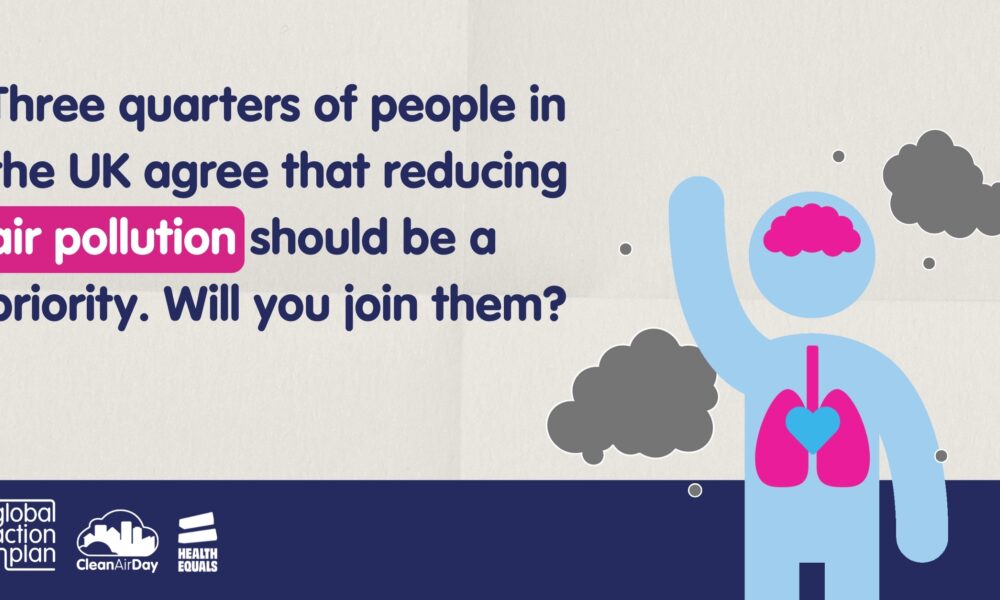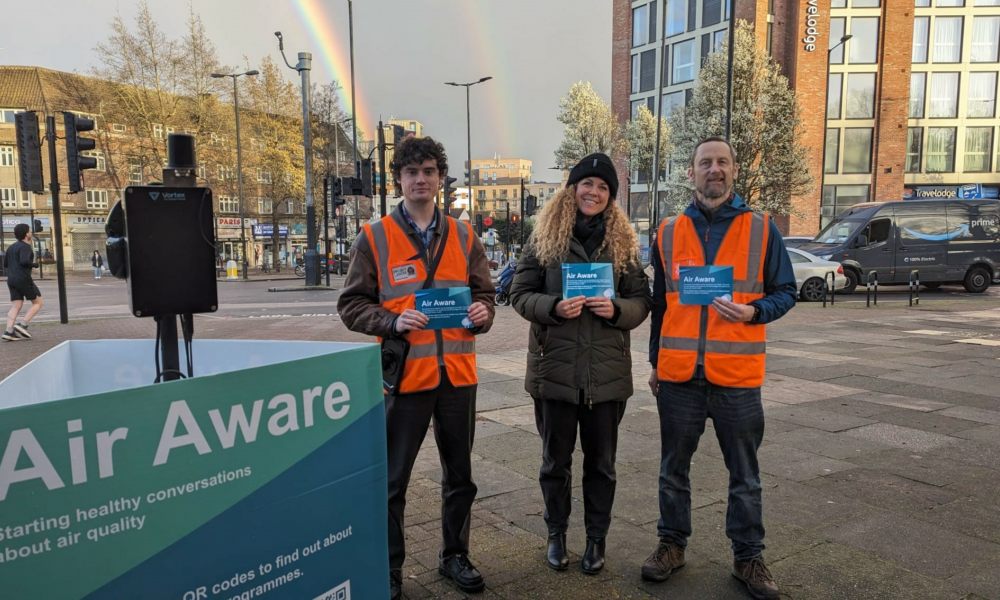Data-driven air quality action plan: A roadmap for local authorities
A step-by-step for local authorities to create data-driven air quality action plans, utilising hyperlocal data and innovative technology.
Scott Sutton - 17 November 2023

Overview
In today's urban landscapes, the pressing concern of poor air quality demands immediate attention. It not only affects the environment but also poses significant health risks to residents. Local authorities hold a pivotal role in combatting this issue by formulating policies and strategies to mitigate air pollution at the community level. To effectively tackle this challenge, a shift toward data-driven approaches is imperative, providing real-time insights and actionable solutions.
Step 1: Understanding the importance of data-driven action plans
Creating effective air quality action plans begins with a fundamental understanding of the significance of data-driven approaches. Tackling air quality isn't a one-size-fits-all solution; it varies across neighbourhoods due to diverse factors like traffic, industrial activities, and weather conditions. Did you know that 80% of roadside nitrogen dioxide, breaching legal limits, originates from road transport?
Data-driven action plans enable authorities to customise strategies for specific areas, concentrating on sources of pollution most relevant to their communities. This targeted approach ensures efficient resource allocation and higher chances of successful interventions.
Step 2: Deployment of hyperlocal air quality monitors
Local authorities should invest in hyperlocal air quality monitoring solutions like VTX Air monitors to initiate a data-driven action plan. These cutting-edge devices offer real-time data on pollutants such as particulate matter (PM2.5 and PM10), nitrogen dioxide (NO2), ozone (O3), and volatile organic compounds (VOCs). Given the documented health risks associated with high exposure to particulate matter 2.5, early identification of these risks is crucial to mitigate potential health hazards. Research connects high exposure levels of the nasty pollutant PM2.5 to an increased risk of heart attacks, strokes and other cardiovascular diseases.
Hyperlocal monitoring captures nuanced variations in air quality within neighbourhoods, enabling precise analysis and targeted interventions in critical locations like schools, healthcare sites, and congested urban areas.
Step 3: Integration with traffic management and enforcement solutions
Traffic emissions are a significant contributor to poor air quality in urban settings. To address this, authorities should explore integrating hyperlocal air quality monitors with traffic management and enforcement solutions. Hyperlocal monitors can be strategically placed in areas with high traffic congestion, and their data can be used to optimise traffic flow in real-time. For instance, when pollutant levels exceed safe thresholds, traffic signals can be adjusted to reduce congestion and emissions.
Furthermore, enforcement solutions can leverage this data to implement dynamic vehicle restrictions based on emission levels, introducing measures like clean air zones, low-emission zones, and low-traffic neighbourhoods. This integration reduces emissions and acts as a deterrent for high-pollution vehicles.
Current interventions, like London's highly debated Ultra-low-emission zone (ULEZ), have notably improved air quality, benefiting public health and the economy. Following its introduction, the mayor, Sadiq Khan, stated nitrogen dioxide concentrations had fallen by 21% in inner London and 46% in central London.
Additional research findings highlight the substantial impact of London's inaugural clean air zone in 2008. Studies reveal a noteworthy 4.5% decline in chronic health concerns and an 8% decrease in respiratory ailments such as asthma and bronchitis. Beyond the health dividends, the economic gains for the capital city have been profound, fostering a staggering £963 million
in cost savings and benefits across Greater London
Step 4: Holistic data integration for insights
To comprehensively understand air quality and its sources, local authorities should combine data from various sources. Integrating hyperlocal air quality data with intelligent traffic management cameras, weather data, and publicly accessible applications provides a holistic view of factors influencing air quality in a given area.
For example, correlating air quality data with weather conditions allows authorities to identify days when meteorological factors exacerbate pollution, prompting pre-emptive measures. Similarly, cross-referencing industrial emissions data with air quality information helps hold polluting industries accountable.
Step 5: Step 5: Data analysis for source identification
Upon integrating data from various sources, authorities should employ data analytics tools to identify primary sources of pollution in neighbourhoods. Machine learning algorithms can unveil patterns and correlations, enabling prioritised interventions and efficient resource allocation.
For instance, analysis might reveal a specific industrial facility as the primary source of a particular pollutant. In response, authorities can engage with the industry to enforce emission reduction measures and ensure compliance with environmental regulations.
Step 6: Community engagement and awareness
Effective air quality action plans necessitate active community engagement. Authorities should involve residents by sharing and consolidating information on local clean air projects to build a better understanding of why they're implementing certain measures and the ebeneift it has on the community and people's health. Educating residents through sharing data on user-friendly interfaces, and mobile apps helps raise awareness of the importance of monitoring air pollution. Real-time data accessible to residents empowers informed decisions about daily activities and travel routes.
Additionally, involving residents in citizen science initiatives enhances the quality and quantity of air quality information. Engaged communities are more likely to support and participate in air quality improvement efforts.
Step 7: Implementing targeted interventions
With a clear understanding of pollution sources and community engagement, authorities can implement targeted interventions:
- Emission reduction programmes: Collaborating with industries and transportation sectors to reduce emissions through technology upgrades, fuel switching, and behavioural change campaigns.
- Traffic calming measures: Implementing clean air zones and designated low-traffic periods to reduce exposure to emissions from idling vehicles.
- Green infrastructure: Investing in urban green spaces and tree planting to act as natural air purifiers.
- Alternative transportation: Promoting public transport, cycling, and electric vehicles to reduce traffic-related emissions.
- Urban planning: Implementing zoning policies to minimise exposure to pollution sources, such as schools and residential areas far from industrial zones.
Regulatory measures: Enforcing stricter emissions standards for industries and vehicles.
Step 8: Continuous monitoring and adaptation
Air quality is dynamic and subject to change. Establishing continuous monitoring systems to track air quality trends and intervention effectiveness is crucial. Regular data analysis and adaptation of strategies based on new insights are essential for sustained improved air quality.
In conclusion, data-driven air quality action plans are indispensable for local authorities striving to enhance air quality and safeguard community health. Authorities can create healthier urban environments by deploying hyperlocal air quality monitors, integrating data sources, engaging with the community, and employing targeted interventions. Continuous monitoring and adaptation pave the way for a sustainable and cleaner future.
For more information on hyperlocal air quality monitoring, contact us here: https://vortexiot.com/contact.
More blogs

Should clean air be a national priority?
Millions across the UK are still exposed to harmful levels of air pollution every day. As we mark Clean Air Day, it’s time to ask: if clean air impacts our health, our…

Engaging communities for cleaner air
As we mark Clean Air Day, we proudly highlight the significance of engagement and behaviour change to make a tangible difference in the fight against air pollution.